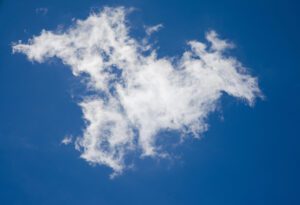Incredible characters with shapeshifting abilities live in the wonderful world of modern fantasy. Whether it’s a steamy romance, kick-ass heroines, or paranormal fiction, shapeshifters have rooted themselves firmly into our hearts.
In Fallen Shroud, book one of my Twisted Curse Series, I introduce readers to four shifter races, each with their own elemental magic. I truly enjoyed piecing the shifter world together. Each of the four elements (fire, water, earth, and air) required dominances and weaknesses to the other elements. They needed to both compliment and negate one other.
When I started writing, I based the characters’ personalities on their elemental magic. As the story progressed, each character showed me how they wanted to branch off into their unique personality. I love it when characters do something completely unexpected!
Wolf shifters control fire elemental magic. Their hot tempers frequently boil over into dangerous confrontations. On the opposite end of the spectrum, fox shifters normally keep a cool head like a tranquil pond. However, if threatened, they’ll manipulate their water elemental magic into a raging tempest. Burly bear shifters may intimidate others with their size, but with their amicable nature, they’ll use their earth elemental magic to protect those in need. Adversaries who tangle with bear shifters find themselves outmaneuvered by the forces of the earth. Air elemental magic belongs to the dragons.
So, when did shapeshifters first appear in literature? According to Ancient Origins, a pre-historic cave drawing in France could be the first known depiction of a human transforming into an animal. Imagine that, as far back as 13,000 BC, people believed in shapeshifting.
Folklore and mythology are filled with human to animal transformations. People often link supernatural power to shapeshifting. In Homer’s The Odyssey, the witch Circe turned Odysseus’ men into pigs. Greek gods frequently used animal transformation to penalize humans. Athena had punished Medusa by turning her beautiful hair into snakes for her indiscretions with Poseidon.
Children’s stories like Beauty and the Beast or The Frog Prince are more examples of involuntary shifting. In these stories, the shifter feels imprisoned in the animal form. While voluntary shifting gives the character the freedom to act in a way that was previously impossible. Sirius Black, Nymphadora Tonks, and her son Teddy Lupin from the Harry Potter series are examples.
Some of the most popular shapeshifters include:
- Remus Lupin, from the Harry Potter series by JK Rowling
- Count Dracula, from Dracula by Bram Stoker
- Mystique from the X-Men comics and movies
Do shapeshifters actually exist? Yes, sort of. An amazing 75 percent of known insects develop through stages of metamorphosis. The caterpillar turning into a beautiful butterfly is one example. Frogs begin life as a tadpole, eventually losing its tail and growing legs. Lobsters and snails also go through metamorphosis. Although I’m amazed and humbled by nature’s miracles, I don’t see these creatures taking lead roles in fantasy fiction any time soon.
Whether you prefer vampires, werewolves, dragons, or ghouls, there’s no shortage of shapeshifter fiction available to fill that craving to step out of your human skin.
What’s your favorite shifter novel?
https://www.ancient-origins.net/myths-legends/evolving-forms-intriguing-look-shapeshifting-003491
https://en.wikipedia.org/wiki/Shapeshifting
https://www.theguardian.com/childrens-books-site/2016/may/22/top-10-shapeshifters-in-fiction



